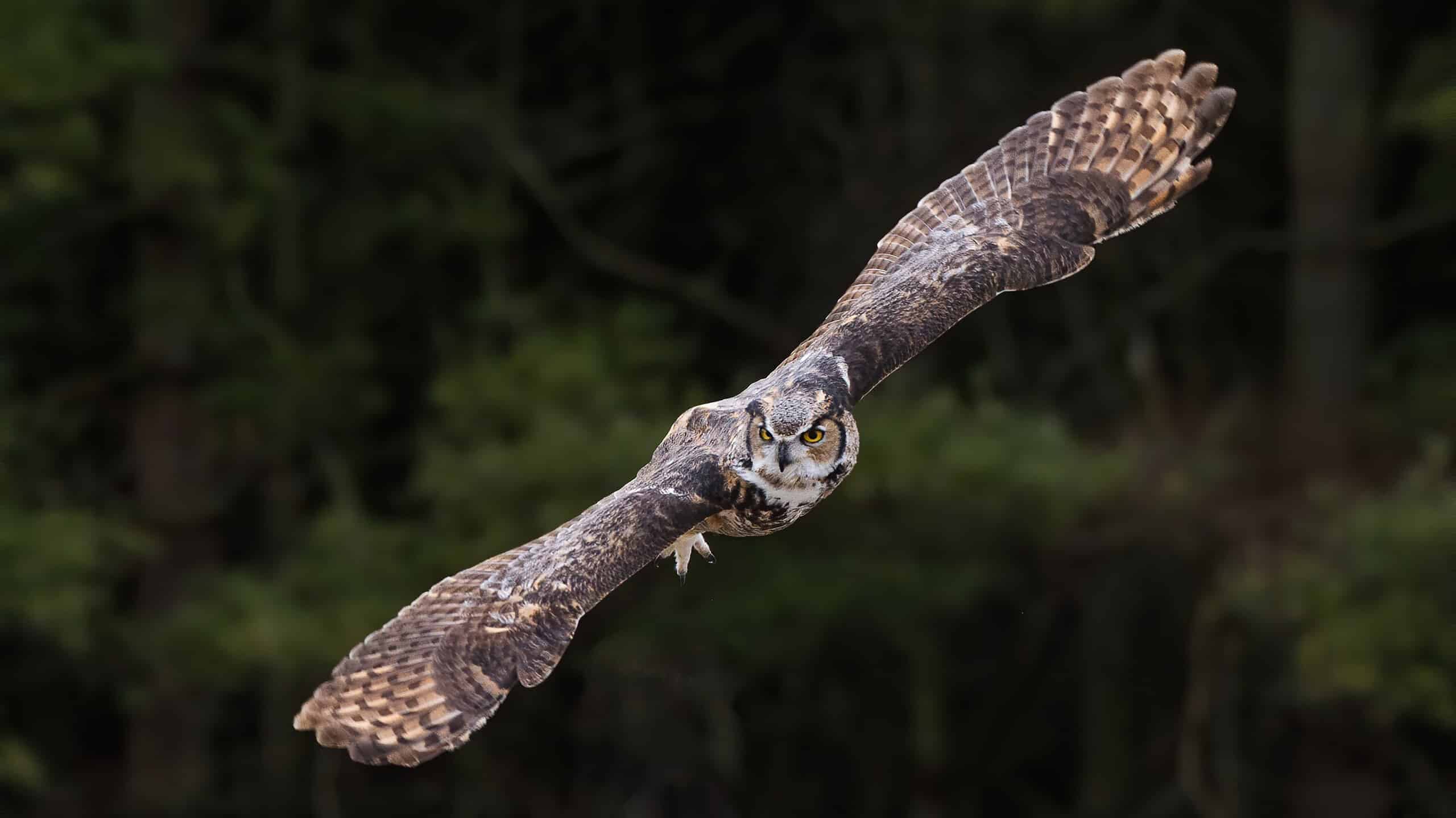Located in the heart of the country, Missouri is a beautiful state with a variety of wildlife. The Show Me State’s lakes and rivers provide a home for over 200 species of fish, and its skies and woods cater to over 400 species of birds.
Still, not every creature in Missouri inspires delight. Some that roam the skies in the Show Me State are quite dangerous for a variety of different reasons. Keep an eye out for these 10 flying animals in Missouri’s skies.
Dangerous Birds in Missouri
Missouri is home to around 32 species of birds of prey, including owls, eagles, hawks, vultures, and osprey. These creatures rule the sky, snatching up meals from the land and sea. Missouri’s large birds may even attack farmers’ livestock or, on rare occasions, humans.
1. Black Vultures (Coragyps atratus)
Black vultures are a common and widespread species in the United States. They are scary-looking flying creature that feeds on carrion, eggs, small reptiles, and rarely, small newborn animals such as cattle or deer.
In 2021, news of black vultures becoming increasingly aggressive was reported. “The birds have been basically killing young calves as they are born,” Kelly Smith, of the Missouri Farm Bureau told NPR in that year. “They’re just a very aggressive, nasty bird,” she added.
The black vultures became such an issue that the Missouri Farm Bureau began issuing some farmers sub-permits allowing them to kill some of the creatures, despite their protection as migratory birds.
Black vultures weren’t just making trouble for farmers. Smith recalled seeing a group of these creatures attacking a car. “On the hood and on the roof,” he recalled, “and eating the plastic and rubber moldings around the windows.”

Black vultures may prey on newborn livestock such as cattle.
©iStock.com/LagunaticPhoto
2. Great Blue Herons (Ardea herodias)
Great blue herons are large wading birds that forage in ponds and on the edges of lakes for aquatic prey such as frogs and fish.
They have slate blue bodies, a long neck and legs, and a pointy bill. A great blue heron’s powerful beak is very sharp and more than capable of killing a human, according to the International Bird Rescue.
Luckily, great blue herons are shy and prefer to keep their distance from humans. They only become aggressive when they are cornered, handled, or defending their young.
Humans are actually much more dangerous to the great blue heron than they are to us, due to our frequent destruction and encroachment on their wetland homes.
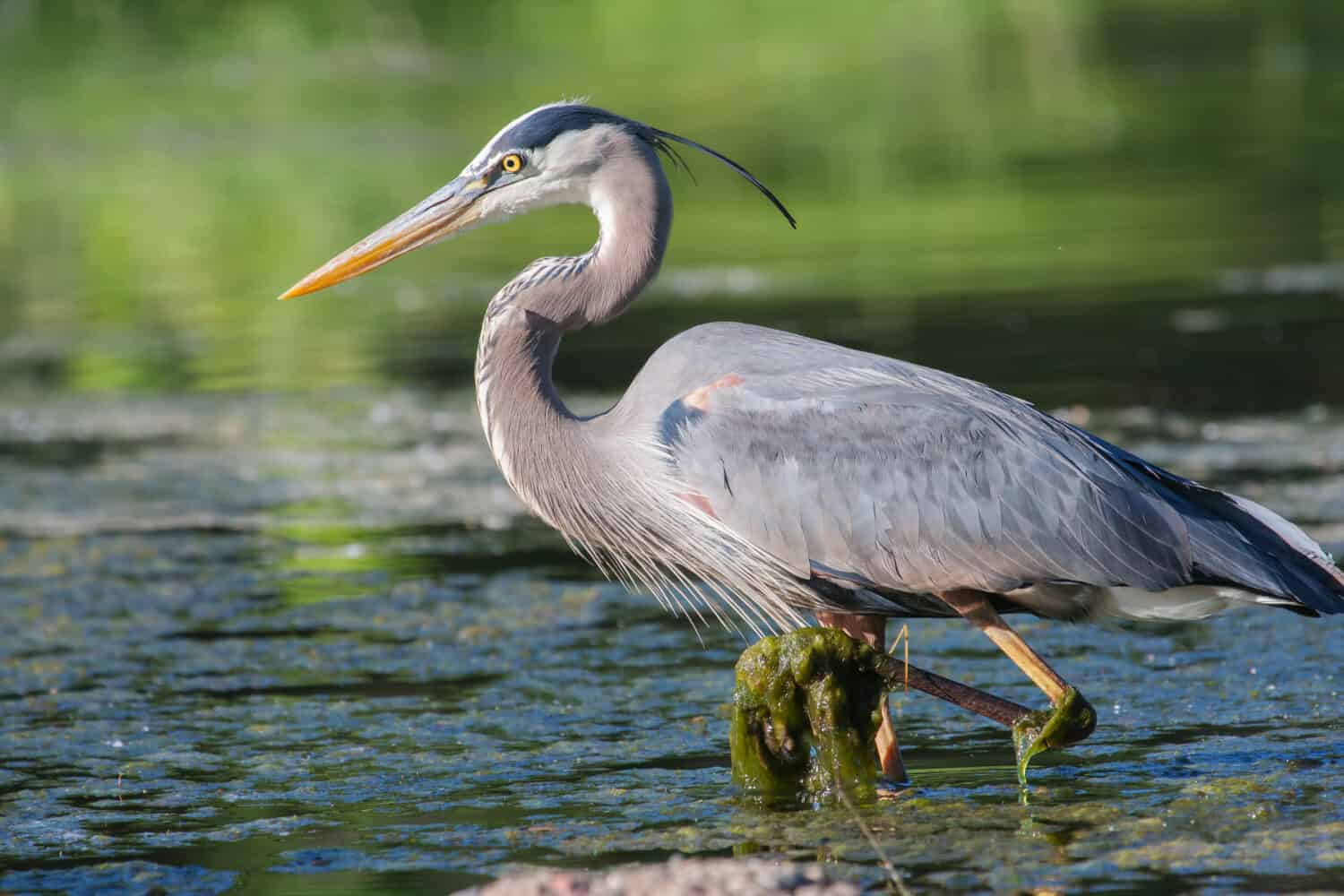
Great blue herons are beautiful creatures with very sharp beaks.
©Joseph Scott Photography/Shutterstock.com
3. Great Horned Owl (Bubo virginianus)
Great horned owls are the largest owls in Missouri. The species gets its name from its long, earlike tufts. They are powerful predators that feed on mice, frogs, and birds and can even take down mammals larger than themselves. Great horned owls are also apex predators. Their only threat is other great horned owls.
Occasionally, owls aren’t just dangerous flying animals to their prey in Missouri. “Owls can and do attack,” explained the Missouri Department of Conservation’s Shelly Colatskie while speaking with the Webster-Kirkwood Times. “If you get close to their nests, especially when they have young, they will swoop down on you.”
A resident of a city in Missouri called Webster Groves described his encounter with owls on several different occasions to the Webster-Kirkwood Times. During the first attack, an owl actually knocked him to the ground.
“The next attack came the next Saturday,” recalled John Galgani. “I actually got scratched pretty bad on the ear, and I bled for a while. These little animals may weigh less than two pounds, but they pack quite a wallop if they hit you. They can knock you down.”
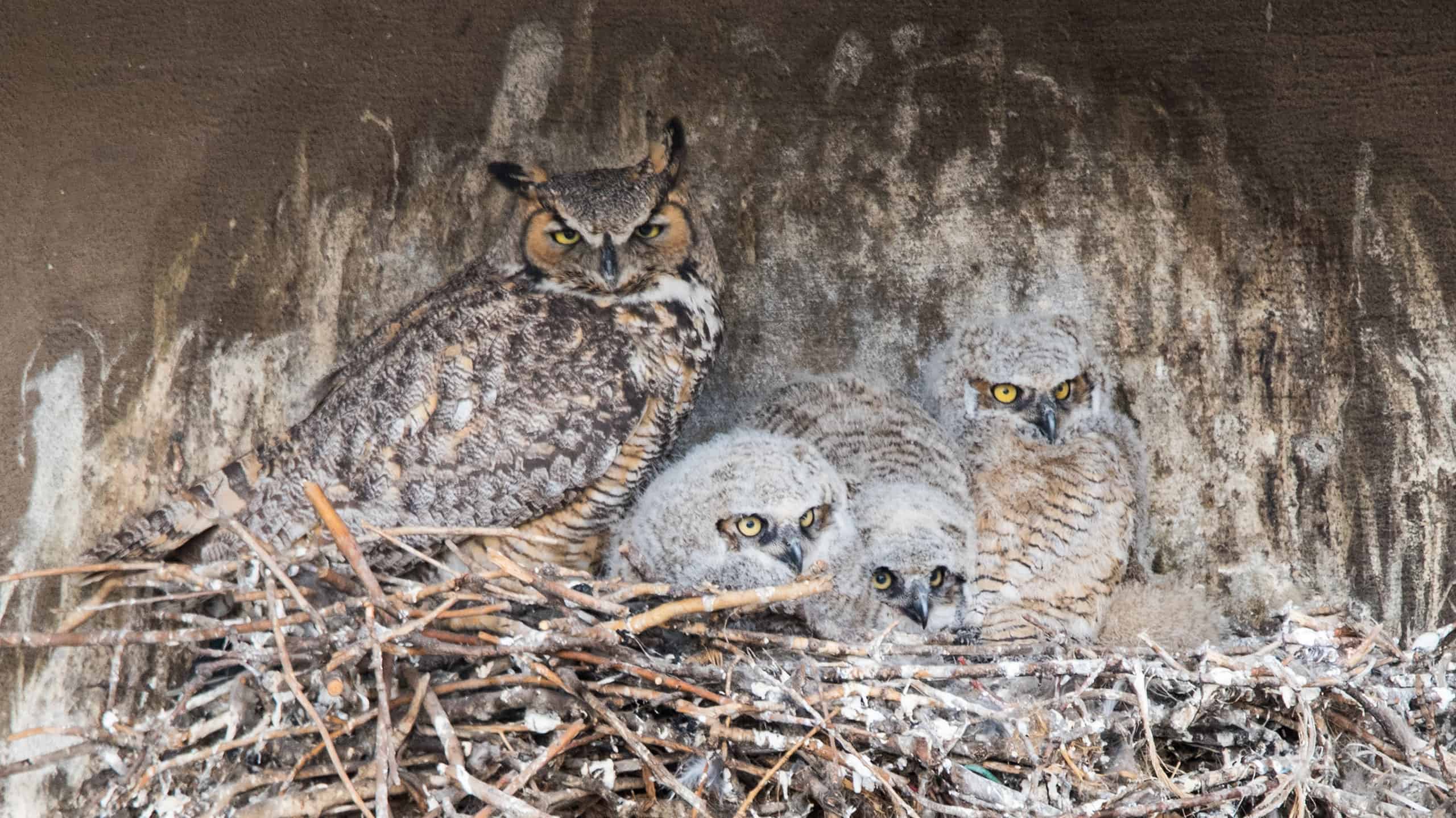
Great horned owls are very protective of their nests.
©iStock.com/Bobliving
Dangerous Bats in Missouri
Missouri is home to over a dozen species of bats. The majority of these Missouri flying animals make their home in dense forests and caves. However, three species of Missouri bats regularly roost in buildings, according to the University of Missouri.
Contrary to popular belief, bats are not generally dirty or aggressive creatures. However, they are dangerous for one main reason — they sometimes carry rabies. While it’s very uncommon for bats to bite humans in the United States, it does sometimes happen. Bats can also transmit rabies to pets that come across a rabid, dying bat.
Another issue can occur when bats make their home in attics or other parts of human dwellings. When dried bat guano is disturbed it creates a kind of dust. If these fungal spores are inhaled by humans they can lead to a serious infection known as histoplasmosis. According to the CDC histoplasmosis usually affects the lungs and can cause pneumonia.
4. Little Brown Bat (Myotis lucifugus)
As its name suggests, the little brown bat is a small brown creature with a body that is about the same size as a mouse. These creatures are only dangerous because of their tendency to make their home in attics and buildings during Missouri’s summer months.
If you find a little brown bat in your home, one of the best courses of action is to call animal control so the creature can be safely removed. Little brown bats are actually listed as endangered by the IUCN and their population is decreasing thanks in part to a deadly fungal disease known as White-nose Syndrome (WNS).
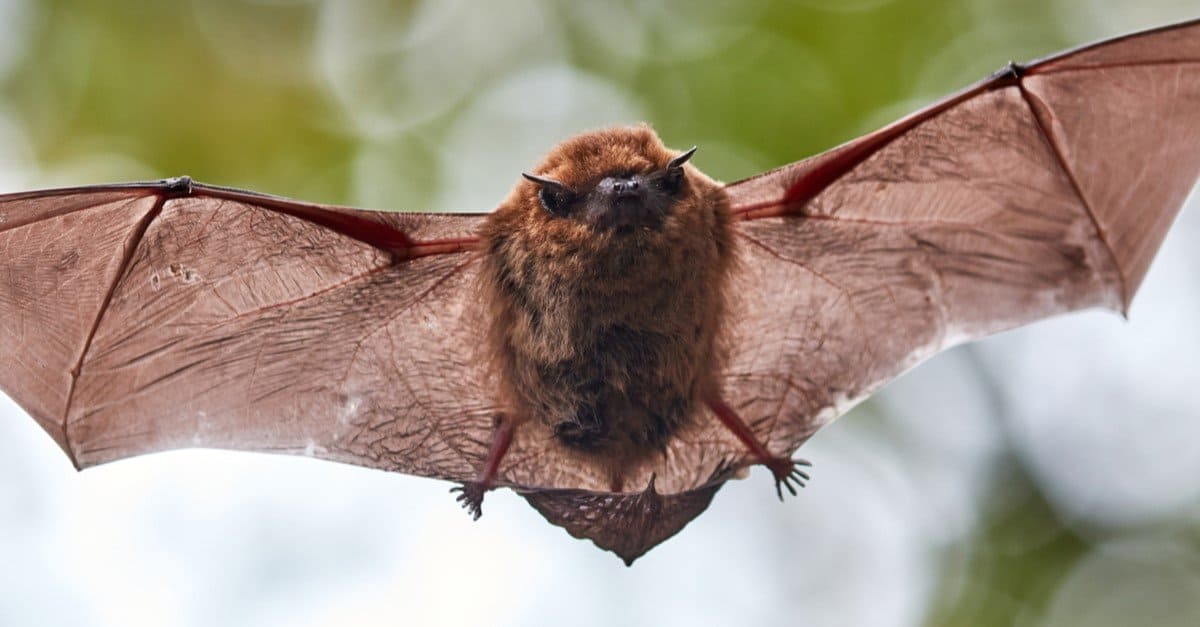
Little brown bats are an endangered species and their population is decreasing.
©Bernd Wolter/Shutterstock.com
5. Big Brown Bat (Eptesicus fuscus)
Another species of bat in Missouri is known as the big brown bat, but their name may be a little misleading. Big brown bats are really only large in size when compared to other species of bat. These flying creatures only weigh about half an ounce on average, with a body length of 4-5 inches and a wingspan of around 12-14 inches.
In the United States, bats are the number one cause of human-related rabies deaths. Bats such as hoary bats and big brown bats have large teeth that can puncture the skin. However, it’s important to note that far less than 1 percent of bats become rabid.

The big brown bat is abundant in suburban agricultural areas.
©Jay Ondreicka/Shutterstock.com
6. Evening Bat (Nycticeius humeralis)
The evening bat is a small creature, typically weighing between a quarter to a half ounce. Like most bats, this species is nocturnal and hunts for small flying insects at night. Evening bats do not roost in caves and so are not at risk for WNS.
Instead, evening bats are a forest-dwelling species that make their home in tree crevices and under bark. In the summer months in Missouri, evening bats may also roost in buildings. Like all bats, this species is capable of carrying rabies, so proper caution should be used if one of these creatures enters your home.

Evening bats are brown all over, have black ears, and have naked membranes on their wings and tail.
Dangerous Flying Insects in Missouri
While Missouri’s smallest flying animals might not seem like a big threat, insects can carry diseases, venom, and painful bites and stings. Some can even cause life-threatening allergic reactions. You’ll want to have your bug spray ready after reading this list.
7. Asian Tiger Mosquitos (Aedes albopictus)
There are about 50 species of mosquito in the state of Missouri and while these pesky insects might not seem like more than a nuisance, they are a major carrier of dangerous diseases.
Asian tiger mosquitos are a particularly aggressive species. As their name suggests, Asian tiger mosquitos did not originate in the United States. They arrived in the country via a shipment of tires from Southeast Asia in 1985.
According to an article from The Joplin Globe, Asian tiger mosquitos have been prevalent in Missouri. This species is known for carrying diseases such as zika, dengue, and chikungunya. Luckily as of 2017, cases of zika originating in Missouri have yet to be reported.

The Asian Tiger Mosquito is responsible for transmitting several diseases, including the West Nile virus.
©Oliver Spiteri/Shutterstock.com
8. Bald-Faced Hornet (Dolichovespula maculata)
Bald-faced hornets are a common, fairly large wasp in Missouri. Due to their large size, the creatures were mistaken for Asian giant hornets around the Ozarks back in 2020. However, bald-faced hornets are not the same as the so-called murder hornets.
Still, bald-faced hornets aren’t a creature you want to mess with. They are aggressive nest defenders and capable of stinging more than once.
Bald-faced hornets have venom and their stings can be quite painful. They may even cause a life-threatening allergic reaction. Thankfully bald-faced hornets are not aggressive away from their nests.

Bald-faced hornets may be mistaken for Asian giant hornets.
©iStock.com/ErikAgar
9. Ringed Paper Wasp (Polistes annularis)
Paper wasps are named after the papery material they use to build their nests. According to Rottler Pest Solutions, they are the most common stinging insects found in Missouri properties.
Their tendency to build nests on overhangs, arches, and eaves frequently brings them in close proximity to humans. They may also invade homes through holes in screens or other entry points.
Paper wasps produce a painful sting that can cause an allergic reaction. While paper wasps may not be aggressive on their own, they are protective of their nests. Humans who are stung multiple times increase their risk of a serious allergic reaction.
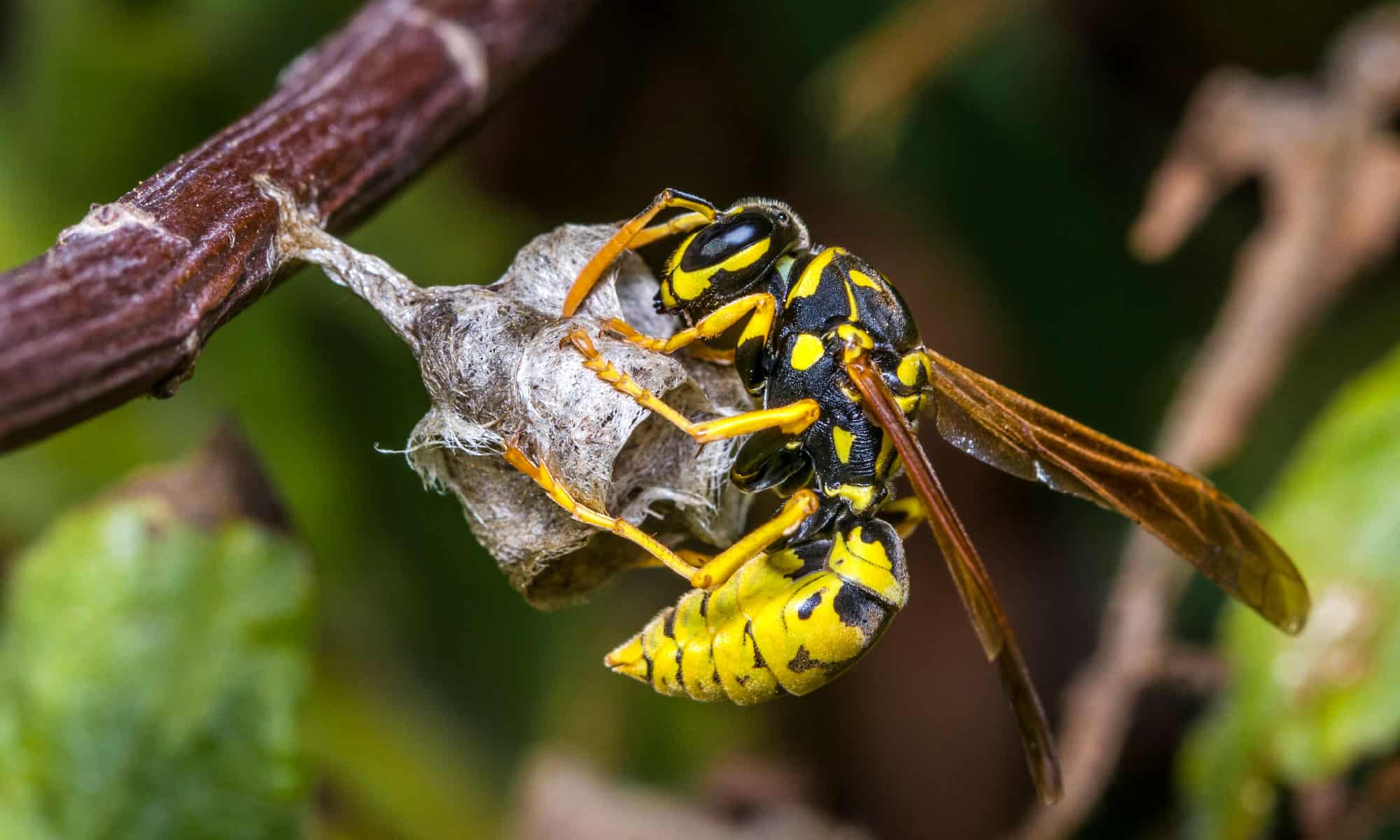
Paper wasps get their name from the papery material they use to build their nests.
©JorgeOrtiz_1976/Shutterstock.com
10. Yellow Jacket (Vespula vulgaris)
Yellow jackets are perhaps the most dangerous stinging insect in Missouri. This is because, according to Rottler Pest Solutions, yellow jackets are social insects that can swarm and give chase. They are fond of meat, which may attract them to BBQs and cookouts.
Yellow jackets may also hang out around dumpsters and trash cans. These menacing creatures build their nests in the ground and are aggravated by vibrations caused by machinery such as lawnmowers, which may cause them to swarm.

Yellow jackets primarily prey on other insects like flies and bees.
©Randy Runtsch/Shutterstock.com
Summary of the Most Dangerous Flying Animals in Missouri
| Animal | Why It’s Dangerous |
|---|---|
| Black Vulture | Kills newborn livestock and may attack humans |
| Great Blue Heron | Sharp beaks are capable of killing humans |
| Great Horned Owl | May swoop at humans near their nests |
| Little Brown Bat | Carrier of rabies, histoplasmosis |
| Big Brown Bat | Carrier of rabies, histoplasmosis, large teeth |
| Evening Bat | Carrier of rabies, histoplasmosis |
| Asian Tiger Mosquito | Carrier of diseases |
| Bald-Faced Hornet | Large in size and defensive of their nests |
| Ringed Paper Wasp | Stings can cause serious allergic reactions |
| Yellow Jacket | Tendency to swarm and give chase |
Thank you for reading! Have some feedback for us? Contact the AZ Animals editorial team.

